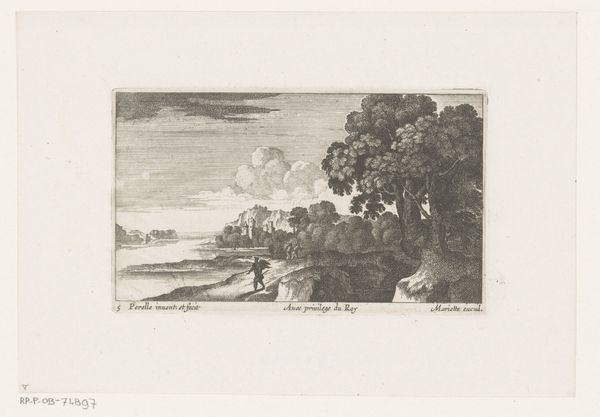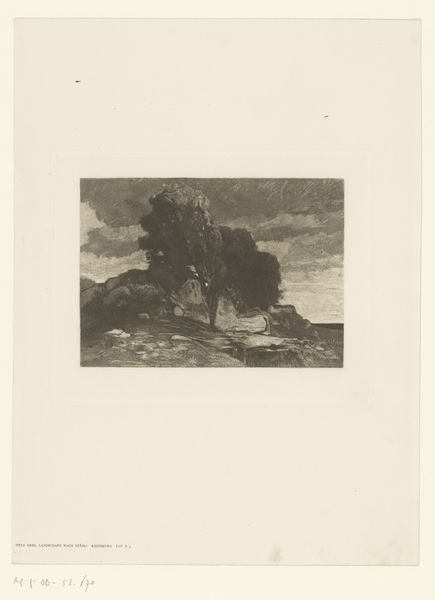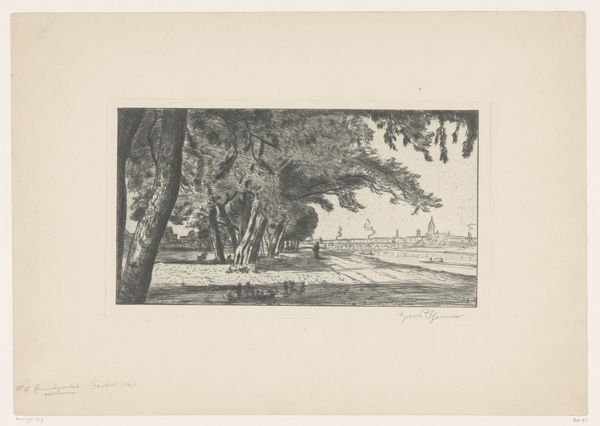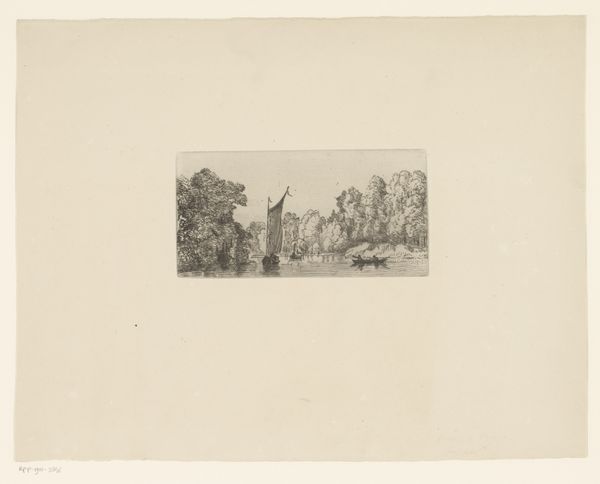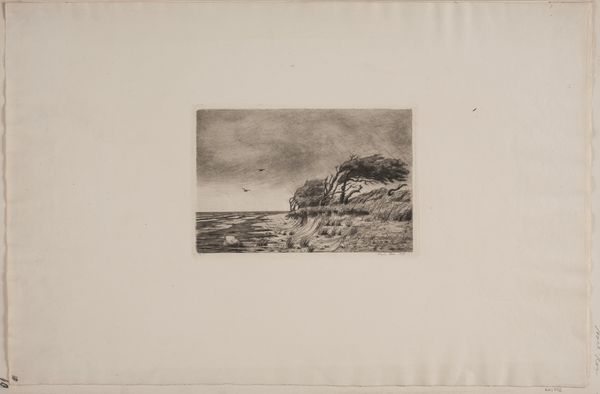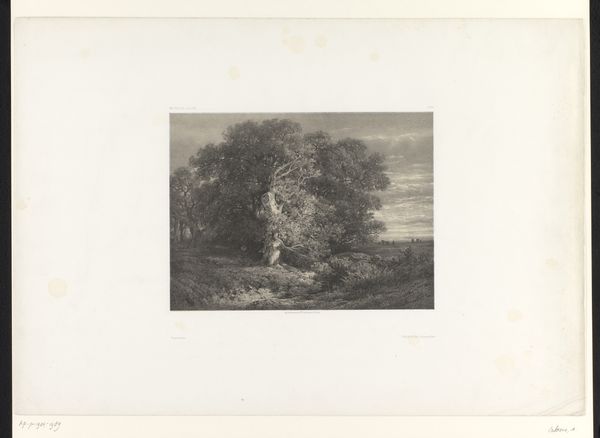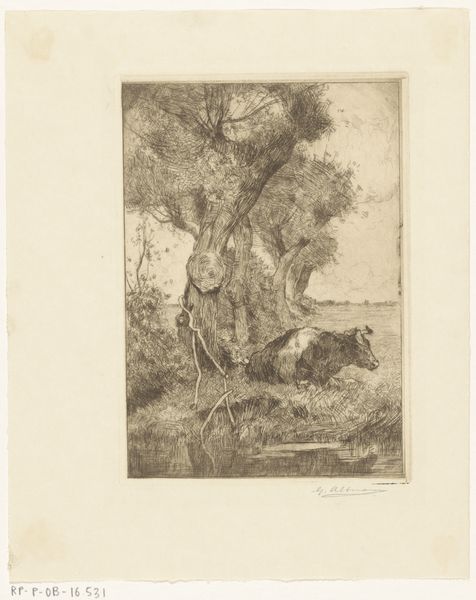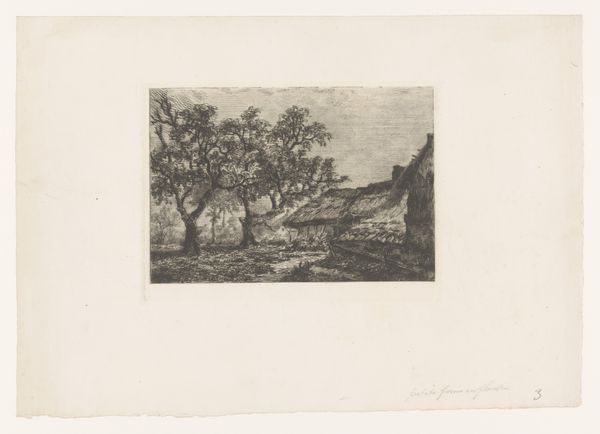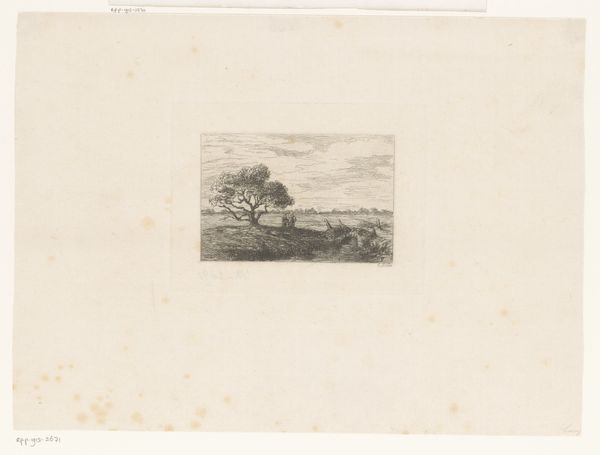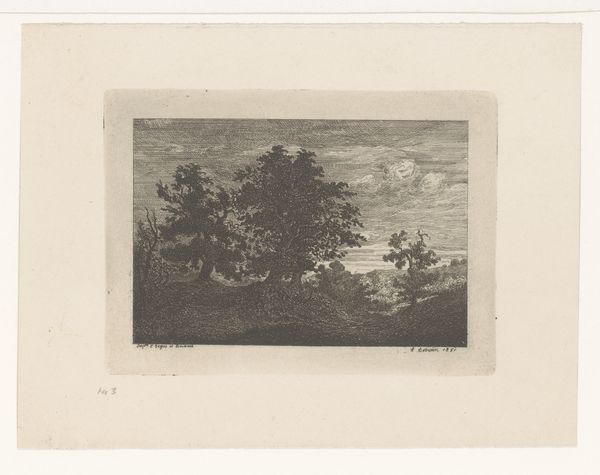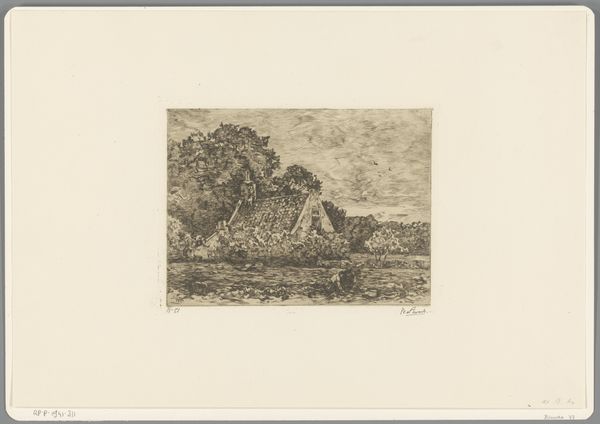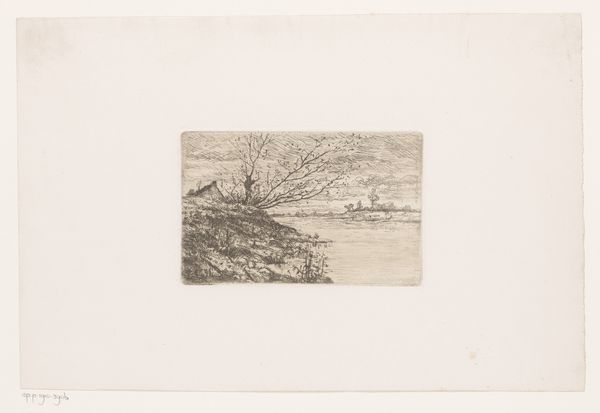
drawing, print, etching, paper
#
drawing
# print
#
etching
#
landscape
#
paper
#
romanticism
Dimensions: 171 × 282 mm (plate); 321 × 446 mm (sheet)
Copyright: Public Domain
Curator: Here we have Francisco de Goya's "The Big Rock," an etching created sometime before 1810. There’s something unsettling about this Romantic landscape. Editor: Absolutely, it feels very turbulent. My eye is drawn immediately to that sharply angled tree in the foreground, bowing before a very severe wind, I presume. The whole image is kind of monochromatic. What kind of statement do you think he’s making, choosing etching? Curator: Well, printmaking allows for reproduction, a wider distribution of ideas, certainly. Etching particularly, with its reliance on acid to bite into the metal plate, carries a sense of alchemical transformation – taking raw material and transforming it into something evocative. It can also highlight texture. And I wonder about its availability: this art isn't necessarily aimed for palace walls; it hints to a certain openness to interpretation. Editor: Right, so rather than painting, which requires so much in the way of material, like pigment and supports, printmaking speaks more to an act of multiplication and labor, almost in tandem. The rock itself is massive, dwarfing that building perched precariously atop it and further down, even the people and animals at the base near what looks like a stream. I can't imagine carving out that view in the form of a print and using this particular set of processes. Curator: It makes me think of human insignificance when face to face with powerful, chaotic forces of nature, that constant precarity... there’s something about Goya's dark romanticism that allows us to find comfort in discomfort and question social orders. Even the material speaks to a broader base. Editor: So it really plays with this tension of nature versus humanity and how we interact, a reflection of Goya’s time that is mirrored by how this etching as object enters into material, broader conversations. It is an interesting counterpoint. Curator: Ultimately it reminds us of the inherent drama within the natural world, even when viewed through the lens of reproductive printmaking. It adds new textures and implications of consumption. Editor: Very true. Goya makes this big rock feel strangely relevant even centuries later.
Comments
No comments
Be the first to comment and join the conversation on the ultimate creative platform.
